This is part II of a series. Read
part I to find out the Beast's backstory-here is Beauty's. I would recommend reading part I if you haven't, all the characters are connected and it gets a bit soap opera-y.
Beauty finds out, after the Prince/former Beast told his story, that his mother's brother is actually her father, and is a King. The good fairy (and friend of the Prince and his mother) tells the story. Beauty's father, the King, fell in love with and married a shepherdess, but after she had given him a daughter, she died. The King was heartbroken but took solace in his daughter. He never knew until now that his shepherdess wife was really a fairy, and the sister of the fairy telling the story.
This sister had visited Fortunate Island in disguise, and happened to meet the King. She admired him but assumed that she, as a fairy, could never fall in love with a human. Yet she was curious as to whether she could find a king who could love a humble shepherdess. So she lived for a while in a cottage, tending sheep which were really genii and in no danger of wolves. In time she fell in love with him as well, so though any human is far below the rank of fairie, she consented to marry him.
W. Heath Robinson
Unfortunately, this fairy was not allowed to marry a human, so she had to keep the marriage a secret. The fairies have a general assembly three times a year they are all required to attend, and the fairy was able to come to these without raising suspicions from her fellow fairies, or her husband. Only the story narrator-the fairy's sister-knew the secret. Yet eventually, the fairies noticed that all her deeds had been contained to Fortunate Island, and fairies are expected to travel throughout the world. She promised to travel, but love for her husband and daughter kept her in the same place. At the next council, this angered the other fairies and led them to the magical book that "spiritually records all [they] do at the very second [they] do it." The forbidden marriage was discovered, and the fairy was stripped of her powers and made a prisoner by the fairies. One old evil fairy cursed her, her husband, and declared that her daughter should wed a monster to make up for her mother's shame. The fairy Queen pleaded to be allowed to live as a mortal. The other fairies had pity on her, but the evil fairy insisted that she be made an example of, and her sentence was carried out.
Now this fairy that ensured her punishment became curious as to the King that had won such tender affections. She also happened to be the same fairy who was the Prince's (future Beast's) guardian, at the time. Remember how she was unexpectedly absent from the Prince for a while? This was the reason she was gone.
Charles Robinson
Meanwhile, back in the kingdom, the people were dismayed at the disappearance of their Queen. The servants, fearing the King's anger, told him she was dead. The King mourned and he and his daughter were inseparable.
Yet then the evil fairy came. She too fell in love with the handsome King, yet realized he had no interest in remarrying. The fairy found a nearby princess and put her to sleep, assuming her beautiful form. She came to the King, claiming to be the princess whose husband had been murdered. She hoped that, as a widow, she would attain the King's sympathy and understanding, and eventually lead to marriage. He did appreciate having someone to talk to in a similar situation, and she requested to live in the Palace and become the guardian of his daughter. Yet the King still showed no signs of proposing marriage to her. She tried to stir up the people to insist that the King take a wife, but he refused and asked the fairy to return to her former land.
The fairy was convinced that Beauty was the only obstacle between herself and having the King for a husband, and determined to kill her. She one of the King's council members and his wife, who were willing to help her. Their plan was to suffocate her in the forest and claim she had suddenly died, too far away for help to have come.
Paul Woodroffe
However, the Queen fairy had pleaded with her sister (the narrator) to watch over her husband and daughter (this summary would be a lot easier if they all just had names...). So she secretly kept watch, and took the form of the bear when Beauty's kidnappers entered the forest with her. The fairy killed the murderous couple, and left Beauty's clothes, covered in blood, so that the evil fairy would not suspect that she was still alive.
The fairy found a house in a small village, where an infant had just died. The fairy replaced the infant with Beauty, and in the morning the nurses rejoiced at the sick infant's sudden recovery and took her home to her father, a merchant. The fairy went with, and gave a prophecy to him, giving Beauty her name and telling him that she would save his life and bring fortune to the whole family. (Earlier in the story, when Beauty determines that she will go to give her life for her father's, he remembers this prophecy, and is one of the reasons he allows her to go.)
The King was grieving once again, and the evil fairy renewed her marriage proposal, but he only replied with scorn again. The narrator fairy asked a powerful fairy to protect the King. The princess whose form the evil fairy had stolen woke up, and the evil fairy returned to the Prince, where she fell in love next with him, back in part I.
Beauty grew as one of the merchant's children, with the good fairy watching over her secretly. This fairy also happened to read the Magical book that recorded the fairies' acts and discovered the evil fairy's proposal to the Prince, and the conditions for the undoing of the spell. She revealed this to the fairy Council, and the evil fairy was imprisoned. The good fairy later arranged for Beauty to come to the palace under the right circumstances, and both Beauty and the Beast fulfilled the conditions to be released from the spells of the evil fairy.
By the way, Beauty's mother had just been released, after going a very dangerous ordeal called becoming a Serpent, which gives the fairy who survives it greater rank and power, so she was reunited with her husband and daughter as well.



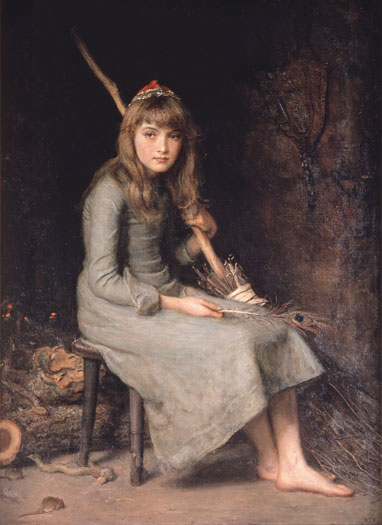
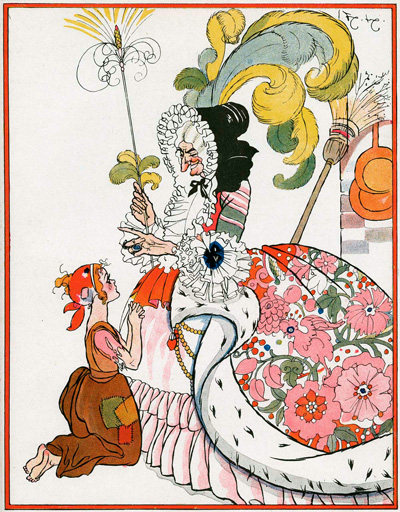





 The story ends:
The story ends:
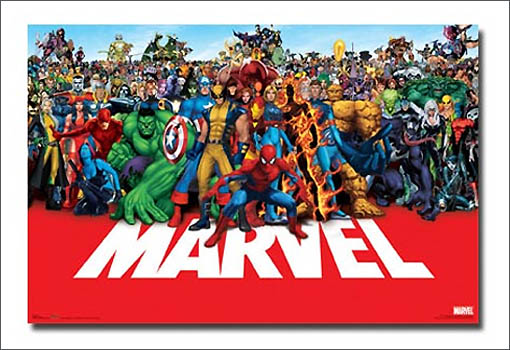 But that got me thinking about the differences and similarities between superheroes and fairy tales. One thing I find interesting about the heroes is that there are so many different versions, like fairy tales. Even among the comics themselves, there are so many issues, and different authors who keep creating tales for the heroes, not to mention the various
But that got me thinking about the differences and similarities between superheroes and fairy tales. One thing I find interesting about the heroes is that there are so many different versions, like fairy tales. Even among the comics themselves, there are so many issues, and different authors who keep creating tales for the heroes, not to mention the various 


 In the 50s, Annaheim, California was not the major city it is today. The land on which Disneyland stands was originally orange groves, surrounded by open farm land. Walt wanted it this way-he didn't want the area around Disneyland crowded with cheap motels and diners. Ironically, the success of Disneyland has made Annaheim a crowded city and detracted from the "escape from reality" concept Walt wanted, but the inside of the park is blocked off from viewing the outside.
In the 50s, Annaheim, California was not the major city it is today. The land on which Disneyland stands was originally orange groves, surrounded by open farm land. Walt wanted it this way-he didn't want the area around Disneyland crowded with cheap motels and diners. Ironically, the success of Disneyland has made Annaheim a crowded city and detracted from the "escape from reality" concept Walt wanted, but the inside of the park is blocked off from viewing the outside.
 This book is a great read for Disney lovers and haters alike. After a brief section on the history of Disneyland, Koenig explores what the Disneyland explorer is like for an employee, and then all the tragic accidents, injuries, deaths, lawsuits, etc. that have happened at the Happiest Place on Earth .
This book is a great read for Disney lovers and haters alike. After a brief section on the history of Disneyland, Koenig explores what the Disneyland explorer is like for an employee, and then all the tragic accidents, injuries, deaths, lawsuits, etc. that have happened at the Happiest Place on Earth .

 A picture of the Matterhorn Mountain under construction-the world's first steel roller coaster.
A picture of the Matterhorn Mountain under construction-the world's first steel roller coaster. 









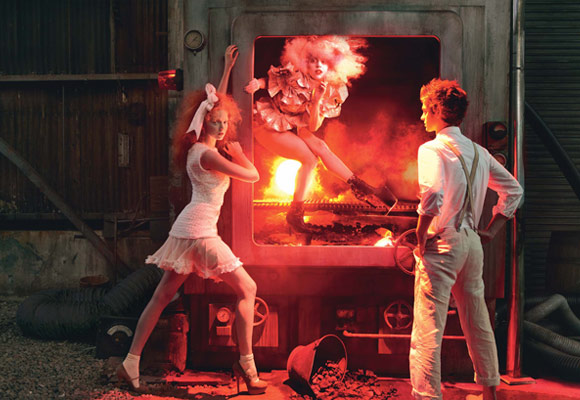
 Now I know I usually pretty much sing Disney's praises on this blog. This is partly because I do have undying loyalty for Disney, and partly because you hear many intelligent arguments attacking Disney and no intelligent defenses. But here I play a bit of devil's advocate: here's a link to Wikipedia's fascinating page on all the
Now I know I usually pretty much sing Disney's praises on this blog. This is partly because I do have undying loyalty for Disney, and partly because you hear many intelligent arguments attacking Disney and no intelligent defenses. But here I play a bit of devil's advocate: here's a link to Wikipedia's fascinating page on all the  Mercedes Lackey's Firebird is a good story, yet left me somehow unsettled. It retells the ballet story, which combines the
Mercedes Lackey's Firebird is a good story, yet left me somehow unsettled. It retells the ballet story, which combines the 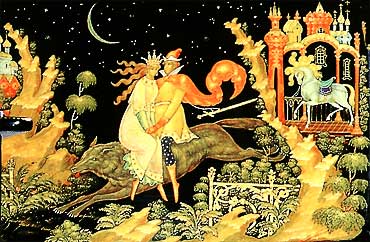

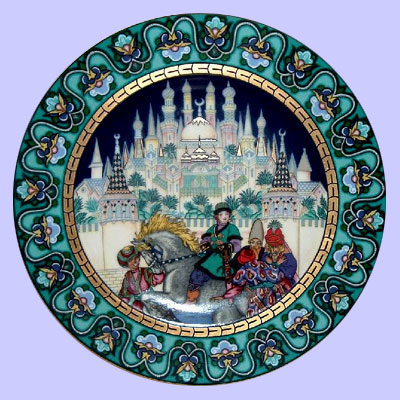




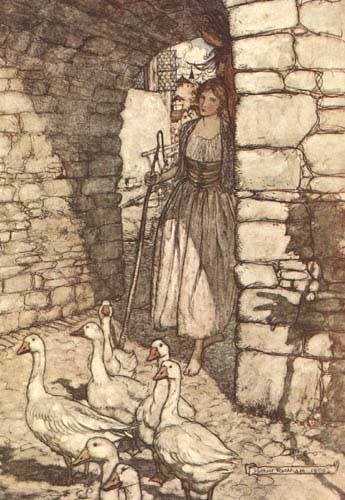 Then she would go out into the meadow with the boy who tended the geese, Curdken. She would sit down and let out her beautiful golden hair. Curdken, when he saw it, wanted to pull it, so the princess said a little spell for the wind to blow Curdken's hat away until she had finished braiding her hair.
Then she would go out into the meadow with the boy who tended the geese, Curdken. She would sit down and let out her beautiful golden hair. Curdken, when he saw it, wanted to pull it, so the princess said a little spell for the wind to blow Curdken's hat away until she had finished braiding her hair. Above illustrations by Arthur Rackham
Above illustrations by Arthur Rackham 

